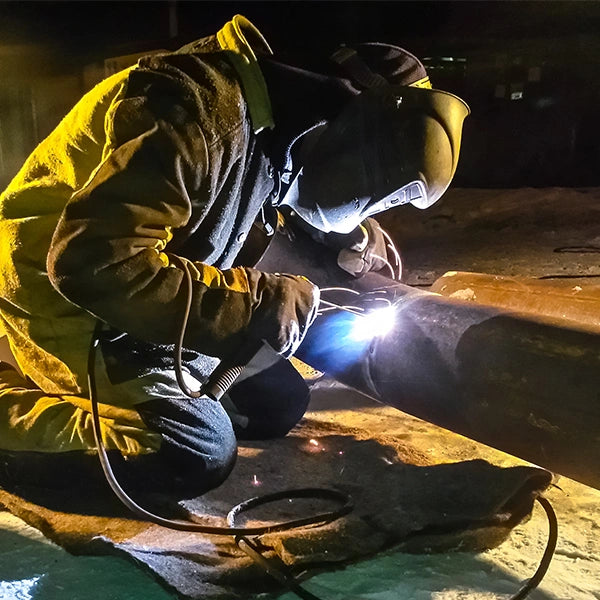Getting Welding Quality: Revealing the Tricks of WPS Application and Optimization
In the world of welding, accomplishing quality is a quest that pivots on the precise execution and optimization of Welding Procedure Specifications (WPS) These foundational documents work as the foundation of welding operations, determining the criteria and treatments needed for generating premium welds continually. However, the secrets to unlocking the full capacity of WPS lie not only in recognizing its relevance yet likewise in grasping the intricacies of its application and optimization. By delving into the vital components, methods, obstacles, and ideal techniques connected with WPS, a world of welding excellence awaits those who agree to explore its midsts.
Relevance of WPS in Welding
The Relevance of Welding Procedure Specifications (WPS) in the welding sector can not be overemphasized, functioning as the backbone for making sure uniformity, high quality, and safety in welding procedures. A WPS provides thorough directions on just how welding is to be accomplished, consisting of necessary variables such as materials, welding procedures, joint design, filler metals, interpass and preheat temperature levels, welding currents, voltages, traveling rates, and much more. By sticking to a well-defined WPS, welders can preserve harmony in their work, bring about consistent weld high quality throughout various tasks.

Crucial Element of WPS
Going over the important components of a welding treatment spec (WPS) is essential for comprehending its duty in welding operations. One crucial element of a WPS is the welding procedure specification, which details the particular welding processes to be used, such as gas tungsten arc welding (GTAW) or protected steel arc welding (SMAW) By including these essential components right into the WPS, welding procedures can be standardized, making certain top quality, effectiveness, and safety in welding procedures.
Strategies for WPS Optimization

Second of all, training and qualification of welding workers according to the details requirements of the WPS is vital. Giving extensive training programs and making sure that welders are certified to perform procedures outlined in the WPS can lead to higher high quality welds and decreased rework.
In addition, leveraging innovation such as welding software and surveillance systems can help in optimizing WPS. These tools can help in monitoring variables, ensuring parameters are within specified limitations, and supplying real-time comments to welders, allowing them to make prompt changes for improved weld top quality.
Common Difficulties and Solutions
Dealing with challenges in implementing the methods for WPS optimization can hinder welding operations' performance and quality. One typical obstacle is inadequate training or understanding of the welding treatment requirements (WPS) among the welding group. This can bring about improper implementation of welds, causing problems and click remodel. To resolve this, extensive training programs must be implemented to guarantee that all welders excel in using check here and interpreting WPS properly.
Another challenge is the absence of proper documentation and record-keeping, which is essential for WPS optimization. Without clear documents of welding specifications, materials made use of, and assessment results, it becomes tough to determine locations for enhancement and ensure uniformity in welding processes. Implementing a durable documentation system, such as electronic welding administration software, can aid improve record-keeping and facilitate information analysis for constant improvement.
In addition, inconsistent welding tools calibration and upkeep can pose a substantial difficulty to WPS optimization. Regular tools checks, calibration, and maintenance schedules must be stuck to purely to make certain that welding specifications are precisely controlled and kept within the defined tolerances (welding WPS). By dealing with these common obstacles with aggressive services, welding operations can enhance performance, top quality, and total welding quality
Finest Practices for WPS Implementation
To make certain successful WPS application in welding procedures, adherence to market standards and careful attention to information are critical. When starting WPS execution, it is essential to begin by extensively understanding the certain welding needs of the project. This involves a detailed testimonial of the welding procedure specs, products to be bonded, and the ecological conditions in which the welding will occur.
As soon as the demands are clear, the next action is to choose the proper welding procedure that aligns with these specifications. This involves seeking advice from the relevant codes and standards, such as those offered by the American Welding Culture (AWS) or the International Company for Standardization (ISO), to ensure check that compliance and quality.
In addition, recording the whole WPS execution procedure is crucial for traceability and quality control. In-depth records must be maintained pertaining to welding criteria, product preparation, preheat and interpass temperature levels, welding consumables made use of, and any type of variances from the initial procedure. Routine audits and reviews of the WPS can assist identify areas for renovation and guarantee ongoing optimization of the welding process.


Conclusion
In final thought, the implementation and optimization of Welding Treatment Specs (WPS) is crucial for accomplishing welding excellence. By comprehending the crucial elements of WPS, implementing efficient approaches for optimization, addressing usual obstacles, and following best methods, welders can ensure premium welds and secure working conditions. It is crucial for specialists in the welding industry to prioritize the appropriate execution of WPS to boost overall welding efficiency and achieve desired results.
The Relevance of Welding Treatment Requirements (WPS) in the welding industry can not be overstated, offering as the foundation for making certain uniformity, top quality, and safety and security in welding procedures. A WPS gives detailed instructions on how welding is to be brought out, including necessary variables such as materials, welding procedures, joint design, filler steels, preheat and interpass temperatures, welding currents, voltages, travel speeds, and a lot more. One critical facet of a WPS is the welding procedure spec, which lays out the details welding procedures to be made use of, such as gas tungsten arc welding (GTAW) or protected metal arc welding (SMAW) By incorporating these key elements into the WPS, welding treatments can be standard, making certain top quality, effectiveness, and security in welding operations.
It is crucial for experts in the welding market to prioritize the correct execution of WPS to boost total welding performance and accomplish desired outcomes.